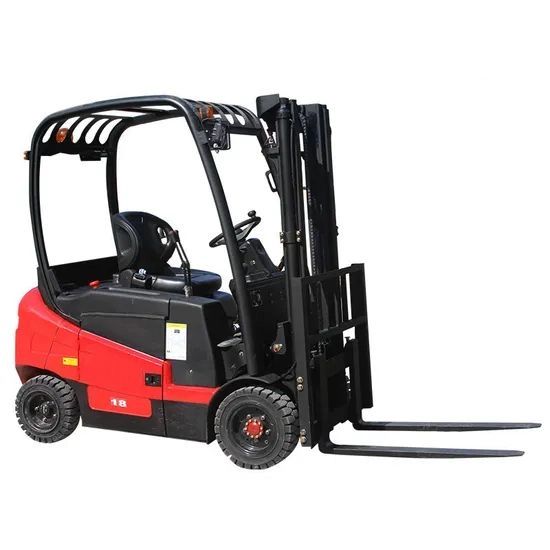The Significant Lifespan Difference Between Lead-Acid Batteries and Lithium-Ion Batteries
The lifespan difference between lead-acid batteries and lithium-ion batteries is significant, which mainly depends on the number of charge-discharge cycles, maintenance level, and application scenarios. In the context of electric forklifts, the typical lifespan of lead-acid batteries is 1.5-2 years, while that of lithium-ion batteries can reach 5-7 years. The specific differences and influencing factors are as follows:

I. Lead-Acid Batteries: Short Lifespan and Dependent on Intensive Maintenance
1. Typical Lifespan Range
- Cycle Life: 300-500 complete charge-discharge cycles (one cycle refers to discharging from a fully charged state to below 20% and then recharging to full).
- Actual Service Life:
- Single-shift operation (1 cycle per day): 1.5-2 years;
- Multi-shift operation (2-3 cycles per day): 1-1.5 years, and it may be less than 1 year in some scenarios with poor maintenance.
2. Core Influencing Factors (Improper Maintenance Will Greatly Shorten Lifespan)
- Maintenance Frequency and Quality: This is the key factor affecting the lifespan of lead-acid batteries.
- Failure to regularly add distilled water (after electrolyte evaporation) will cause the battery plates to be exposed and sulfated, potentially shortening the lifespan by 30%-50%;
- Failure to perform "equalizing charging" (low-current charging for a long time to repair mild sulfation) once every 3-6 months will deteriorate the consistency of battery cells, leading to the early occurrence of "inability to fully charge and short discharge range".
- Charging Method:
- Overcharging (charging time exceeding 10 hours) will cause the battery plates to soften and the electrolyte to boil; a single severe overcharge can reduce the lifespan by 10%;
- Fast charging (current exceeding 0.3C, e.g., charging current >180A for a 48V/600Ah battery) will accelerate the heating of the plates, and the cycle life may decrease from 500 cycles to less than 300 cycles.
- Depth of Discharge and Environment:
- Long-term deep discharge (discharging to below 20%) will cause the active material of the plates to fall off, and the lifespan will be 40% shorter than that of shallow discharge (charging when discharged to 50%);
- High-temperature environment (>40℃) will accelerate the corrosion of the plates, and the lifespan will be 20%-30% shorter than that in a normal temperature environment (25℃).
II. Lithium-Ion Batteries (Taking Lithium Iron Phosphate Batteries, the Mainstream for Forklifts, as an Example): Long Lifespan and Maintenance-Free
1. Typical Lifespan Range
- Cycle Life: 1500-2000 complete charge-discharge cycles, and some high-end battery cells can reach more than 2500 cycles.
- Actual Service Life:
- Single-shift operation (1 cycle per day): 5-7 years;
- Multi-shift operation (2-3 cycles per day): 3-5 years, and after attenuation, it can still maintain more than 70% of the initial capacity (lead-acid batteries need to be replaced when the capacity attenuates to 50%).
2. Core Influencing Factors (Dependent on BMS and Usage Strategy)
- Performance of BMS (Battery Management System): It acts as the "lifespan manager" of lithium-ion batteries.
- A high-quality BMS can achieve "cell balancing" (actively transferring electricity to reduce the voltage difference between cells), preventing overcharging and over-discharging of some cells, and increasing the cycle life by 20%-30%;
- If the BMS malfunctions (e.g., temperature monitoring failure), thermal runaway of the battery cells may be triggered at high temperatures (>60℃), directly leading to battery scrapping.
- Charging and Discharging Strategy:
- Lithium-ion batteries support fast charging (2C-3C, e.g., a 48V/600Ah battery can be charged to 80% in 30 minutes) with little impact on lifespan (after 1000 fast charging cycles, the capacity still remains 80%);
- Long-term storage at full charge (for more than 1 month) will slightly affect the lifespan. It is recommended to keep the battery at 50%-70% charge during storage, which can extend the lifespan by 15% compared with storage at full charge.
- Ambient Temperature:
- Low temperature (<0℃) mainly affects the capacity (e.g., the capacity remains 80% at -20℃), but has little impact on the cycle life (the cycle life can still reach 1500 cycles);
- A liquid cooling system is required in high-temperature environments (>40℃). Without cooling, the cycle life may decrease from 2000 cycles to less than 1500 cycles.
III. Summary of Key Lifespan Differences Between the Two
| Comparison Dimension | Lead-Acid Batteries | Lithium-Ion Batteries (Lithium Iron Phosphate) |
|---|
| Cycle Life | 300-500 cycles | 1500-2000 cycles |
| Actual Service Life | 1.5-2 years | 5-7 years |
| Core Factors Affecting Lifespan | Maintenance Quality (water addition, equalizing charging) | BMS Performance, Charging Strategy |
| Usability After Attenuation | Need to be replaced when capacity remains 50% | Can still be used normally when capacity remains 70% |



